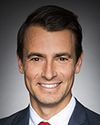Thank you.
Mr. Chair, members of the committee, fellow panellists, good afternoon.
My name is Gilles Soulez, and I am the president of the Canadian Association of Radiologists, associate professor in the Université de Montréal's department of radiology and interventional radiologist at the Centre hospitalier de l'Université de Montréal, or CHUM, in Montreal. It is an honour to be here with you today, unfortunately under dire circumstances for Canadians who need care.
Our workforce is burned out and insufficient in number. We need short, medium and long–term investments today to remedy the situation.
As you know, medical imaging is our health care system's gateway for diagnosing diseases, but it is also needed to assess the effectiveness of treatments and to guide minimally invasive treatments in interventional radiology. Whether you have a stroke, cancer, trauma or back pain, medical imagery will often be necessary a number of times in your care pathway.
In the time I have allotted, I will speak to three issues: excessive and growing wait times; the need for health human resources investment; and the need for the latest equipment and information technology to allow for these human resources to be optimized.
Let's first talk about wait times. Canadians are waiting too long for diagnostic imaging procedures, and the pandemic has made this worse. Originally from France, I came to Canada in 1991. At the time, Canada was among the top countries in terms of wait times for medical imaging. After 20 years of underinvestment in health care infrastructure, wait times are again exceeding the P3, priority 3, 30‑day wait time across the country.
Prior to the pandemic, patients were waiting on average 50 days for CT scan diagnostics and from 69 to 89 days for magnetic resonance imaging, or MRI, diagnostics, which is already much too long. These numbers have continued to grow owing to a drop in test productivity during the pandemic. At the height of the crisis, we noted a 50% to 70% decrease in radiology services across the country.
At this time, the activities have unfortunately not returned to normal. Our health care system is not currently equipped to handle these volumes. If this situation persists, we are at risk of leaving many patients undiagnosed and untreated.
In 2019, the Conference Board of Canada estimated that the cost of these excessive wait times resulted in a loss of $3.7 billion in gross domestic product, or GDP, and $400 million in lost tax revenues in 2017. The costs will certainly be much worse in 2022.
The second issue has to do with health human resources. Excessive wait times have led to a situation where medical radiation technologists and sonographers are working overtime to try to keep up with the demand. Many of these front–line workers are burned out, getting sick—including from COVID‑19—and exacerbating an already dire situation for patients. But the human cost of nearly 24 months of overtime has had a pervasive impact on these front–line health care workers. It is our responsibility to put forward a plan to improve their lives and to take better care of Canadians.
Finally, investments in health human resources must be made now. We need to implement a strategy for increasing health human resources in medical imaging by hiring more staff, implementing new training programs and expanding on existing programs.
A survey of our members indicates that 70% of radiologists see the staff shortage as the most significant barrier to addressing wait times. For example, in the Gatineau region, close to you in Parliament, 25% of technologist positions are vacant. Health human resources are also hindered by aging and often insufficient equipment and by a glaring lag in the integration of information technologies. Those technologies help optimize the organizational process and the work flow with fewer repetitive human actions. They also help ensure the relevance of examinations in a prescription and decrease the number of unnecessary examinations.
We need to work smarter to improve our performance while protecting our staff.
Investment in medical imaging equipment is necessary. In 2019, the Conference Board of Canada estimated that approximately 30% of our diagnostic medical imaging equipment is 10 years old or older. Investment in diagnostic imaging equipment across the country is at a 20‑year low. Newer imaging equipment—specifically for MRIs, but also CTs—helps reduce examination times by providing better diagnostic performance and less radiation exposure for patients.
For example, the use of artificial intelligence in recent units and new rapid frequencies make it possible to reduce the time of an MRI examination by 30%.
Our aging equipment also exposes us to more frequent breakdowns than before, which unfortunately makes the problem worse.
In 2003, the federal government, under Paul Martin's leadership, injected $1.5 billion in medical imaging equipment. This really helped Canada ensure equitable access to medical imaging for all Canadians.
The time has come to once again invest in efficient medical imaging equipment and to develop a health human resources strategy for radiology to avoid crippling our health care system and to ensure patients are receiving the right test at the right time, ultimately saving lives.
To summarize, excessive and growing wait times in medical imagery are reducing efficiency across our health care system, as our action is critical in the patient care process. Investments must be made quickly to foster the recruitment and retention of human resources in medical imaging. We need more efficient imaging equipment and information technologies to once again optimize the operational process while preserving our human resources.
A $6‑billion investment was included in the 2021 Liberal election platform to reduce wait times, and MRI was specifically referenced, as that is really the area with the most delays.
Investing $1.5 billion in human resources and equipment will not only benefit our front-line and second-line staff, but more importantly—











